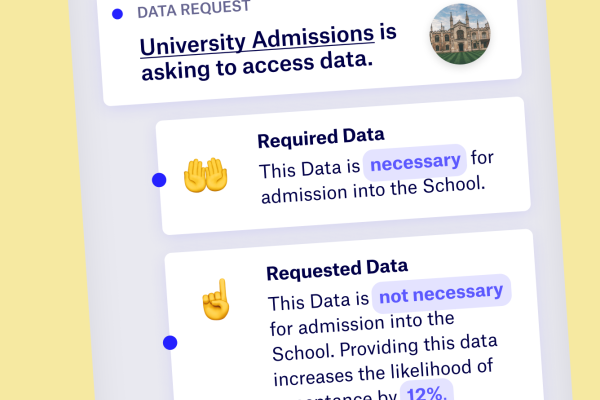Exploring Data Intermediaries as Infrastructure for a Human-Centric Data Economy
Team
- Sam Barnett
- William Odom
- Nico Brand
- Kaitlyn Andres
Timeframe
2020 ↝ 2023Keywords
- Research Through Design
- Speculative Design
- Interaction Design
- Digital Archives
Outcome
-
↬
Pictorial at NordiCHI ‘22
-
↬
7 Design Fiction Proposals
The Core Idea

Data intermediaries have been proposed as human-centric services that mediate the flow of personal data between individuals, data sources, and data users. They could offer people transparency and agency—such as the ability to stop the flow of data, request deletion, or re-use their own data in new ways. While included in recent EU legislation, data intermediaries currently exist only as high-level aspirations. Little is known about how they could or should be designed, or what new services they might enable.
Defining Data Intermediaries
When connecting a data source to a data user, an individual can either select a data intermediary they already use or opt for a new one. Different intermediaries may present distinct value propositions within their ecosystems — some specialize in particular data categories, others focus on functionalities like storage or transformation.
As interaction designers and HCI researchers, we approach data intermediaries from the perspective of the end user. Through our research, we interpret and define data intermediaries as:
a digital service that mediates the flow of personal data between an individual, and service or entity that uses personal data;
the data intermediary holds a duty of care over the user’s data and is beholden to their desires for fair use;
for the benefit of both individuals and data users, data is verified and authenticated;
an individual has the ability to choose between one or more data intermediaries, that have different specializations and foci.
Design Research Process
Exploring Data Intermediaries as Infrastructure for a Human-Centric Data Economy: Speculations & Critical Reflections
- Sam Barnett,
- Nico Brand,
- William Odom,
- Kaitlyn Andres
Acknowledgments
-
↬
This research is supported by the Natural Sciences and Engineering Research Council of Canada (NSERC) and the Social Sciences and Humanities Research Council of Canada (SSHRC).
